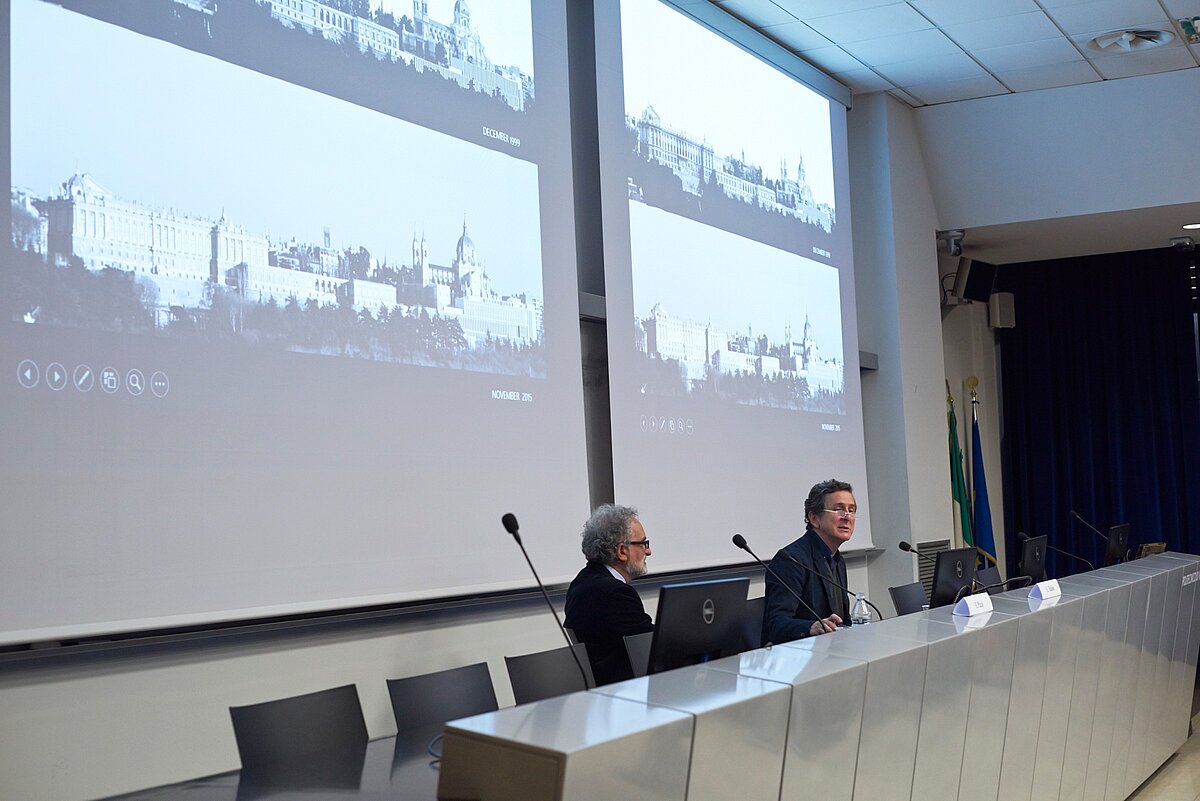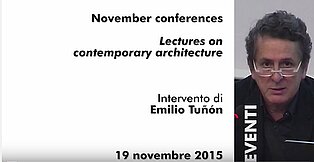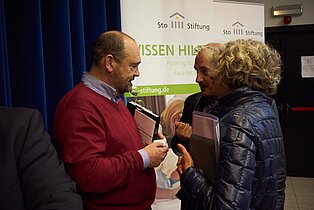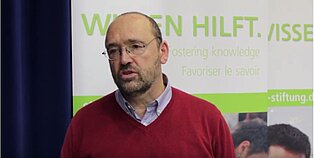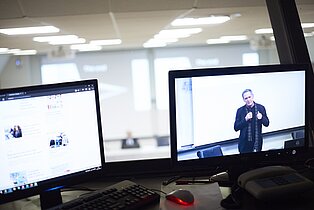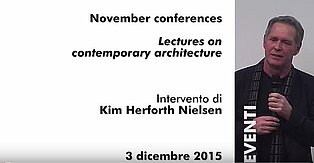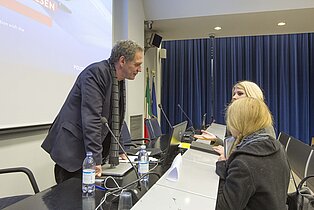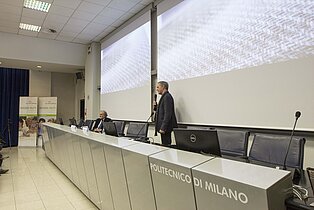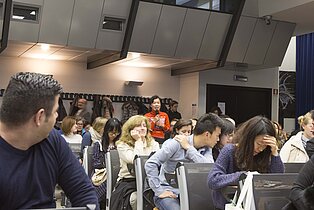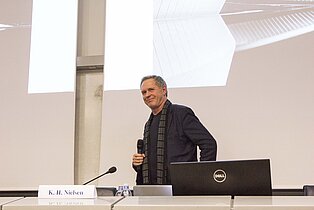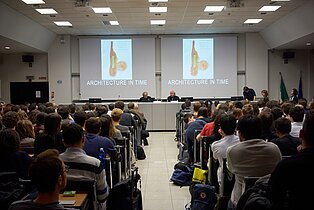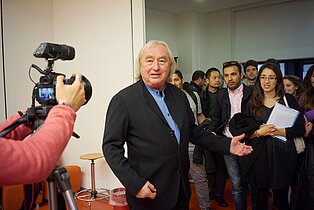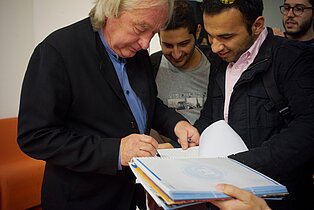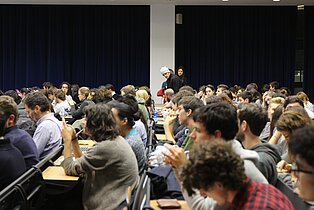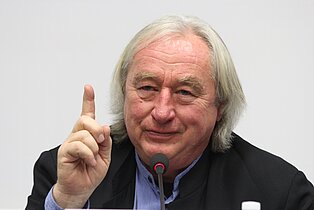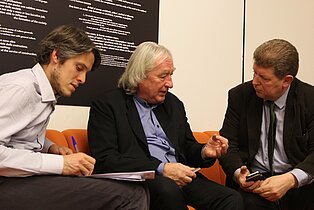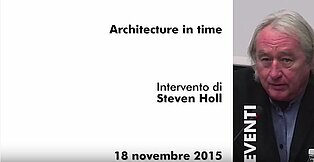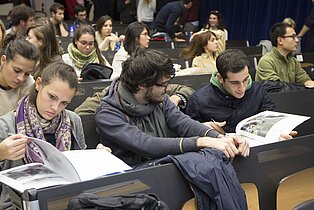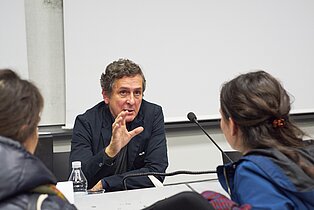Constant Transformation and Change | Emilio Tuñón
Emilio Tuñón was the second lecturer among renowned architects who had been invited to Milan to talk about current projects, convictions and challenges in contemporary architecture.
In 1992, Emilio Tuñón (1959) co-founded with Louis Mansilla (1959-2012) Mansilla + Tuñón Arquitectos. Emilio Tuñón continues with Emilio Tuñón Arquitectos. The office combines theory and teaching (Tuñón is professor at the Architectural Design Department at ETSAM in Madrid) on the one hand with design and construction practice on the other.
The relation between theory and practice is well reflected by his projects and has been synthetized and analysed in a publication called CIRCO, an architectural pamphlet. The architectural idea is similar to the flight of a fly on a window, floating and flying from one point to another and constantly transforming and changing.
This movement can be found in the Museum of Zamora: the building is an abstract box that creates an active relationship with the old city centre. It is a stone cube where a family of skylights, all with the same section, define different spaces through its various positions, heights and orientations. Tuñón stressed that this project represents research of quality and diverse planning. The León Auditorium represents the subject of quality and diversity in the facade: the windows are equal to each other, but each of them hides a different space on the inside, revealing the importance of light.
The diversity and quality in section is developed in the Museum of Castellón. It was inspired by an ancient Roman floor composed by similar single pieces that create different images. This building is a combination of four different museums, and the section reveals a cascade of double height rooms, creating fascinating diagonal views and an intriguing ambiguity of scale. At the entrance, the letters creating the word “museu” (museum in Valencian) act as an introduction to the building and as supporting pillars for the roof beams.
In the MUSAC in León, Tuñón uses repetition of single elements to create a system: squares and rhombuses are composed in plan, reflecting the pattern of people behaviours and exploring quality and diversity in people relationships. As the client wanted the museum to be colourful, the architects were inspired by León cathedral’s stained glass windows: the public square outside the building takes on a concave shape embraced by large coloured glass panels.
Tuñón underlines the importance of renovation for contemporary architecture, considering time a construction material.
The relationship between existing urban elements and new interventions is investigated and developed in El Aguila, a former brewery transformed into the Madrid Regional Government Archives and Library. The connection between old and new is set by means of the concept of industrial architecture: all the buildings of the complex represent industrial buildings of their time, making it possible to easily identify the old and new parts without any camouflage.
The Royal Collections Museum of Madrid represents another challenging operation of connection and urban renovation. The building acts as a natural extension of the existing Royal Palace, becoming part of the landscape of the city and connecting the upper part with the lower part of the city. The linear structure of the museum acts as an inhabited retaining wall, continuing the plinth of the Cathedral and following the lines of the Royal Palace.
With the Atrio Hotel in the medieval precinct of Caceres the studio was again confronted with a refurbishment project. It has a smaller scale, but it was a challenging process because of the strong historical surroundings. The building is composed of small spaces: its core is represented by the kitchen and the dining room. Beside the small scale of the intervention, the building revitalizes and rehabilitates buildings previously abandoned: the surrounding town acquires a new sense of contemporaneity.
Watch the Constant Transformation and Change | Lecture (Video | 1:09:28 min)


